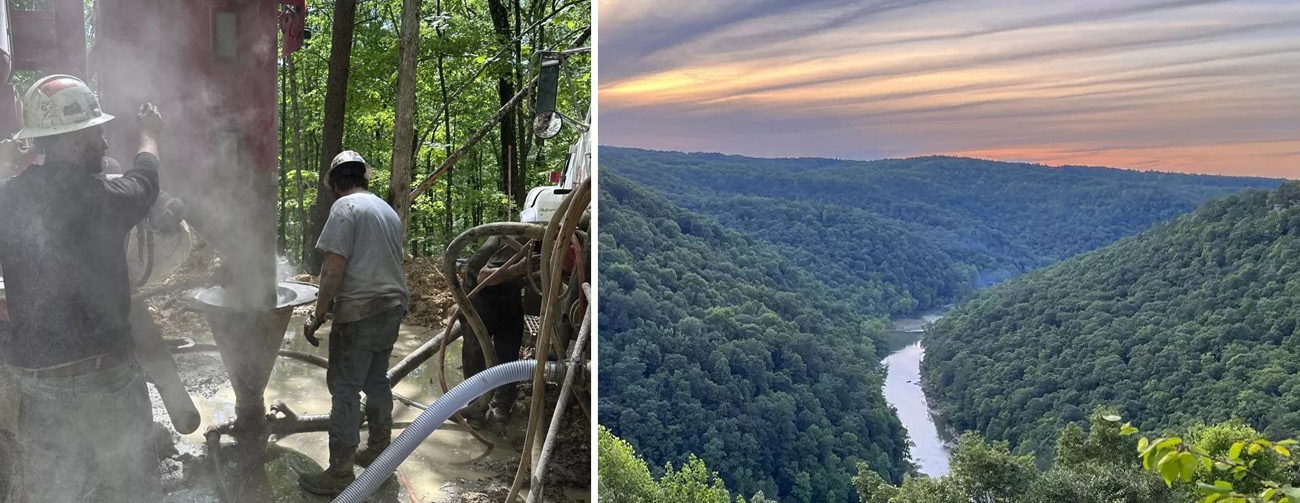News Release

NPS Photo
|
Subscribe
|
Contact: Daniel Banks, 423-569-9778
Contact: Tom Blount, 423-569-9778
Oneida, Tennessee: Big South Fork National River & Recreation Area encompasses 125,000 acres of rugged terrain within the Cumberland Plateau in southeastern Kentucky and north-central Tennessee. It is the fifth-largest National Park Service (NPS) unit east of the Mississippi River. It attracts more than 800,000 visitors annually. They can enjoy fishing, hunting, rafting, kayaking, horseback riding, mountain biking, rock climbing, wildlife viewing, nature photography, and more.
Big South Fork National River and Recreation Area also includes more than 275 permitted oil and gas extraction sites, most of them drilled in the 1970s and ‘80s. Many are abandoned sites known as orphaned wells.
“It’s truly a recreational destination for people – and oil and gas just happens to be here as part of our history,” says Tom Blount, Chief of Resource Management at the park.
The NPS and partners recently completed work at Big South Fork National River and Recreation Area to plug six orphaned wells, remove often-rusted wellhead equipment, and restore affected land to a more natural state. The work’s primary goals were to protect groundwater from any oil, gas, or brine seepage; to eliminate public safety threats from derelict equipment; and to enhance visitors’ experience aesthetically.
Oil and gas restoration is complex work involving several steps: planning, access, plugging, and reclamation. Once logistical planning is complete, access – getting necessary heavy equipment in and out – is difficult and time-consuming because well sites often are remote. Plugging is laborious, too. It involves relieving any pressure in the wellbore, removing liquids and adding layers of cement. Reclamation involves removing wellhead equipment and creating conditions that let nature restore itself.
As of summer 2025, Big South Fork National River and Recreation Area contains 146 orphaned wells that have been plugged (including six from the recent work), 16 active wells; 50 shut-in (temporarily inactive) wells; and 75 permitted wells that were not drilled or have not been verified in the field. “We’re very proud of our working wells, and the work being done to plug the orphaned wells,” says Niki Stephanie Nicholas, the park’s Superintendent.
The recent work at Big South Fork National River and Recreation Area is one of about three dozen oil and gas restoration projects ongoing at 10 NPS units across the nation. “Plugging these wells prevents contamination of soils, water, air, and it allows the ecosystems to recover and thrive,” says Forrest Smith, NPS lead engineer on oil and gas matters.
The benefits are widespread. Visitors “get to experience the natural beauty and enjoy the recreation without being inhibited by oil and gas infrastructure,” Smith says. Local communities benefit because methane and fluid leakage beyond the parks’ boundaries subsides. Taxpayers benefit from acting now, Smith says, because the longer the wells sit, the more expensive they become to clean up and the more dangerous they are to human and environmental health.
Big South Fork National River and Recreation Area, Blount says, conserves “the last piece of free-flowing river on the Cumberland River system.” The park is home to 91 fish species and 40 mussel species, many of them rare. Two endemic rare plants are Cumberland rosemary and Virginia spirea. Restoration of the oil and gas sites provides habitat for that wildlife and clean water for everyone downstream. It’s not a stretch to say the 2 million residents of the Nashville metro area – a couple hundred miles down the Cumberland River – have oil and gas reclamation efforts at Big South Fork National River and Recreation Area to thank, in part, for their clean drinking water. “You bet,” says Blount, “groundwater and surface water protection from us is protecting all the residents downstream.”
For more information, please contact Big South Fork NRRA at 423-569-9778.
www.nps.gov
About the National Park Service. More than 20,000 National Park Service employees care for America's 430+ national parks and work with communities across the nation to help preserve local history and create close-to-home recreational opportunities. Learn more at : WEBSITE FACEBOOK TWITTER INSTAGRAM YOUTUBE
Last updated: July 24, 2025
